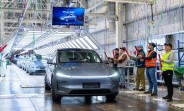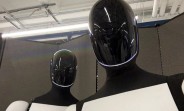Tesla's Robotaxi service set for Austin debut on June 22
After years of promises, Tesla is finally ready to launch its public Robotaxi service. Elon Musk announced a start date of June 22 for the first rides in Austin, Texas. However, the company acknowledges this date could change, reflecting the immense pressure and scrutiny surrounding the long-awaited debut.
The initial rollout is planned to be a rather quiet affair. A small fleet of approximately 10 to 20 specially equipped Model Y vehicles will begin navigating a limited, geofenced area of the Texas capital. While these electric cars will operate without a human in the driver's seat, a team of remote supervisors will monitor them, ready to intervene if necessary.
Tentatively, June 22.
— Elon Musk (@elonmusk) June 11, 2025
We are being super paranoid about safety, so the date could shift.
First Tesla that drives itself from factory end of line all the way to a customer house is June 28.
The Robotaxi is the biggest shift yet in Tesla's strategy. As sales of its electric cars started to slow down, the company decided to bet its future on the success of autonomous driving technology. The company has pivoted away from developing a lower-cost EV to pour resources into its Full Self-Driving (FSD) software, the system that will power the Robotaxi fleet. Musk also announced that on June 28, a Tesla vehicle will drive itself from the factory floor directly to a customer's residence for the first time.
Videos have already surfaced on social media, showing modified Model Ys with a "Robotaxi" logo, driving through Austin's streets without a driver. The videos are obviously exciting for fans and investors, but they also highlight the immense technical and safety hurdles Tesla must overcome to gain widespread public trust.
— Elon Musk (@elonmusk) June 11, 2025
Austin's choice for the launch is strategic. Texas provides a more favorable regulatory environment for autonomous vehicles compared to other states. State law in Texas preempts local municipalities from creating their own rules, establishing a single, statewide framework for self-driving cars, and simplifying the path to deployment for companies like Tesla.
But the road to a nationwide Robotaxi network is filled with regulatory roadblocks. If Tesla wants to expand to a market like California, it will face a much more complex set of rules. The Golden State employs a phased permitting system that demands extensive testing data, including a minimum of 500,000 miles driven for a driverless testing permit, with a significant portion of that mileage required within California itself. The state's Department of Motor Vehicles also has broad authority to impose restrictions on fleet size and operational hours based on safety performance.
BREAKING:
— Dalton Brewer (@daltybrewer) June 10, 2025
THE FIRST EVER TESLA ROBOTAXI WITH NO ONE IN THE DRIVER SEAT WAS JUST SPOTTED IN AUSTIN
Robotaxi is printed on the side of the car 😎$TSLApic.twitter.com/TK39Tojhzq
The Robotaxi announcement has been met with a mix of excitement and skepticism. Wall Street analysts see the launch as the potential beginning of a new growth chapter for Tesla, one focused on artificial intelligence and robotics. The company's stock saw a bump following the news.
Many experts remain cautious, pointing to Musk's history of optimistic timelines and the broader challenges that have plagued the autonomous vehicle industry for years, including safety incidents involving competitors. For now, all eyes will be on the streets of Austin to see if Tesla's big bet on a driverless future finally pays off.
Reader comments
- Anonymous
- dSV
Ah, the "Full Self Driving" feature that China won't allow them to call by that name because it falls far short of what that implies. And which they'll no doubt still call "full self driving" even when they effectively h...





Facebook
Twitter
Instagram
RSS
Settings
Log in I forgot my password Sign up